Five things we learnt from the May 2022 elections
In advance of the elections, we asked five key questions about what the results might mean. Here we consider the answers.
On Thursday 5 May, elections took place across the United Kingdom.
Over 6,800 local council seats were contested in Great Britain.
Elections were held for all local council seats in Scotland and Wales.
In England, local elections took place in all London boroughs (but not the City of London), 33 of 36 metropolitan boroughs, 60 of 181 district councils, and 21 of 58 unitary authorities. Elections were also held in the county council areas of Cumbria, North Yorkshire and Somerset, where new unitary authorities will start operation in April 2023.
And in Northern Ireland the first elections were held to the assembly since the UK’s withdrawal from the EU.
The post of mayor of the South Yorkshire Combined Authority was also up for election, after incumbent Dan Jarvis stood down as metro mayor after four years.
In advance of the elections, we asked five key questions about what the results might mean. Here we consider the answers.
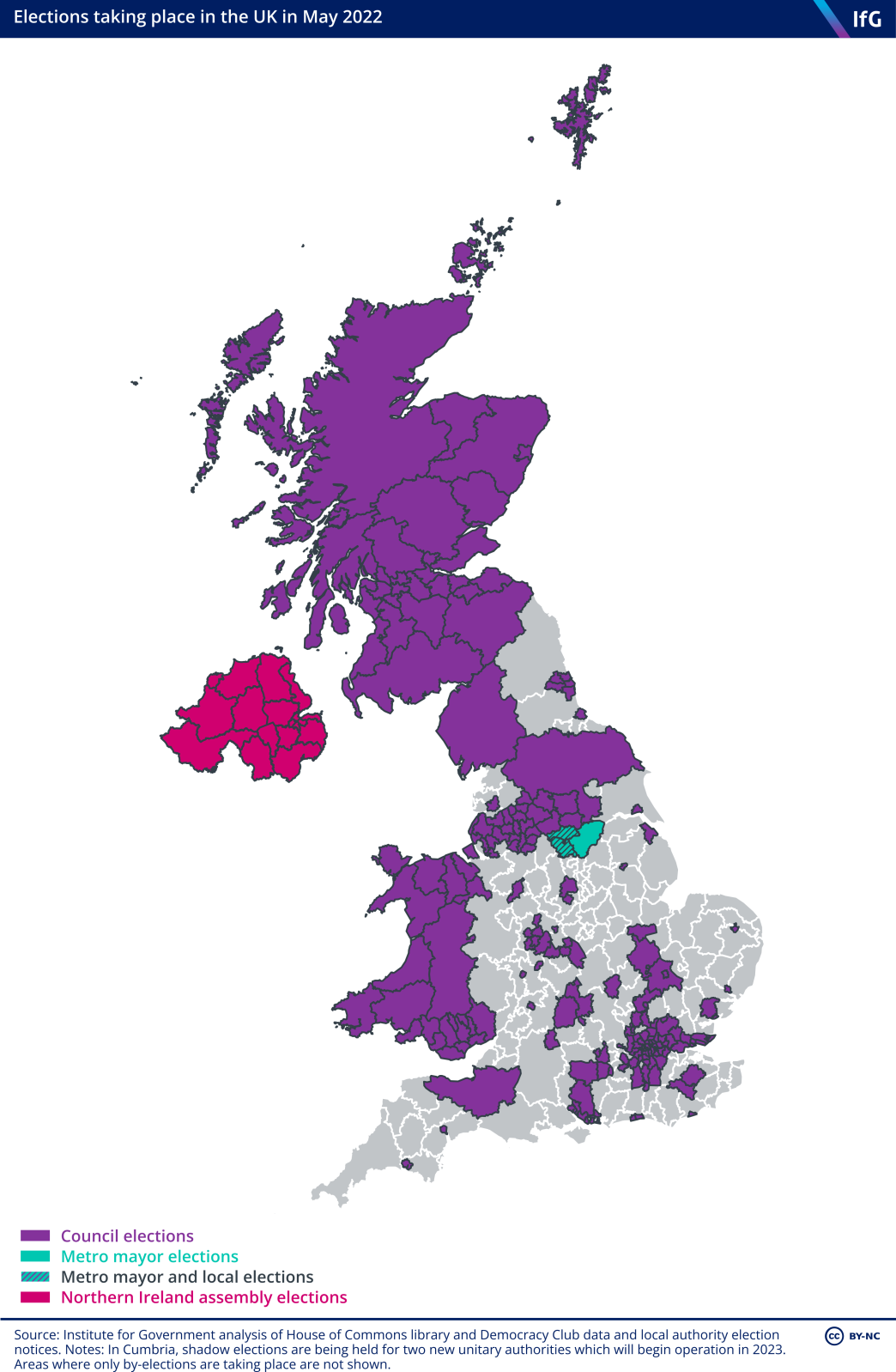
1. Have the local election results put further pressure on Boris Johnson?
Going into these elections, the Conservative Party held 39% of council seats in Great Britain and 42% in England – remarkably high figures for a party that has been in power for over a decade. The Conservatives made further gains in 2021, helped by a bounce in the polls from the successful vaccine roll-out.
This year, the party lost around 500 council seats, with particularly notable losses in Scotland, Wales and London. In England, the party lost control of 11 councils, including Westminster and Barnet in London, Southampton and Gosport on the south coast, and councils in “Blue Wall” areas such as Huntingdonshire, Maidstone and Wokingham. Labour recorded some advances outside London, notably in Cumberland, one of two new unitary authorities replacing Cumbria County Council from 2023, which overlaps with three Conservative-held Westminster constituencies. The party also took control of Kirklees and Rossendale councils and generally held its ground, without substantial advances, in northern “Leave” voting areas where it suffered big losses in the 2019 General Election, and the local elections in 2021.
Perhaps the most worrying development for Boris Johnson’s Conservative Party will be the recovery of the Liberal Democrats, which made notable gains in the South West, a former stronghold, and “Remain” voting areas of the South East, where a large number of Conservative Westminster seats are concentrated. The Liberal Democrats won Somerset with a big swing from the Conservatives, while in Surrey it took control in Working, and made gains in places like Elmbridge, which overlaps with the constituency of Deputy Prime Dominic Raab. The Green Party also performed strongly, recording more net gains outside London than the Labour Party.
Boris Johnson will argue this year was always going to be a return to a more typical “mid-term” council election, particularly in the context of a challenging economic outlook and rising cost of living pressures. The concern for the prime minister and his party is that this challenging context looks set to persist for some time.
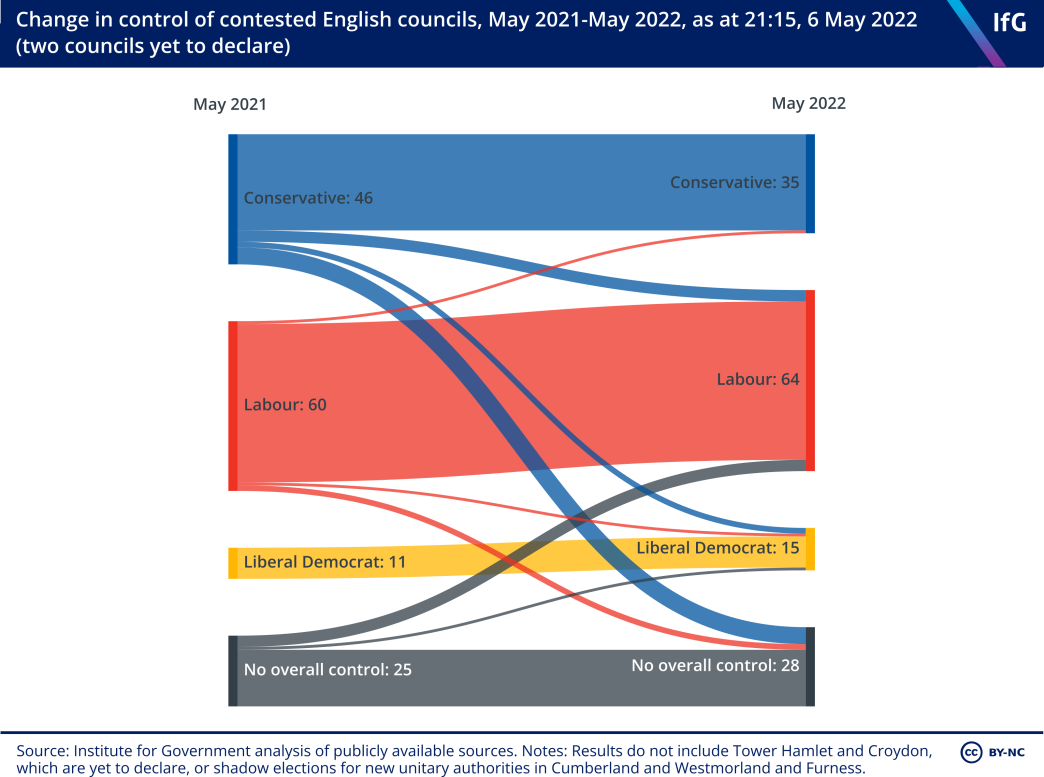
2. What does Sinn Féin's victory mean for Northern Ireland?
As polls had predicted, Sinn Féin became the largest party in the Northern Ireland assembly for the first time, winning 27 of the 90 seats. This was the same number as in 2017, but the Democratic Unionist Party (DUP) lost three seats, pushing it into second place. The cross-community Alliance Party came third, more than doubling its seats to 17.
The result means that Sinn Féin have the right to nominate the first minister for the first time since the assembly was created, a symbolic moment in Northern Ireland’s political history.
Under Northern Ireland’s power-sharing devolution settlement, if an executive is formed there is no practical difference in the powers of the first minister and deputy first minister. But forming a new government may prove impossible. An executive can only be formed on a cross-party basis, and the DUP has indicated that it may refuse to nominate a deputy first minister until its concerns relating to the Northern Ireland protocol are addressed. The parties have up to 24 weeks to nominate the first minister and deputy first minister. If they cannot reach agreement by the end of this period, new elections will be held.
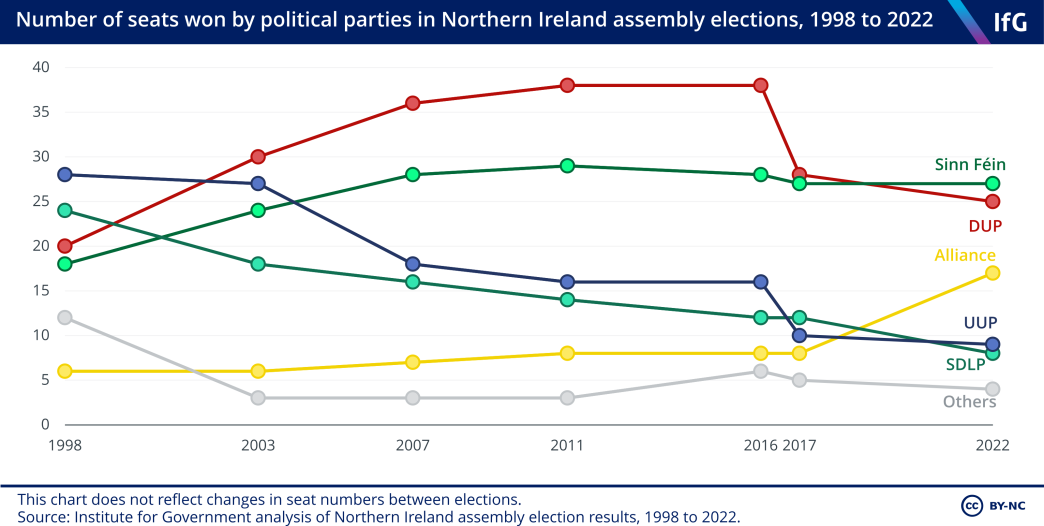
3. Did Labour win back lost ground in Scotland and Wales?
Labour recorded gains in the council elections in both Scotland and Wales, mainly at the expense of the Conservative Party. In Scotland, Labour regained its position as the second largest party at a local level, with its share of council seats rising to 23% from a nadir of 21% in 2017. The Labour Party also took outright control of West Dunbartonshire, a particularly strong result given that councillors are elected using the single transferable vote system, which tends to mean councils are run by coalitions. However, the Scottish National Party remains dominant in Scottish local government and added slightly to its share of councillors. Support for the Conservative Party fell back, with its share of council seats dropping to 17%, from 22% in 2017.
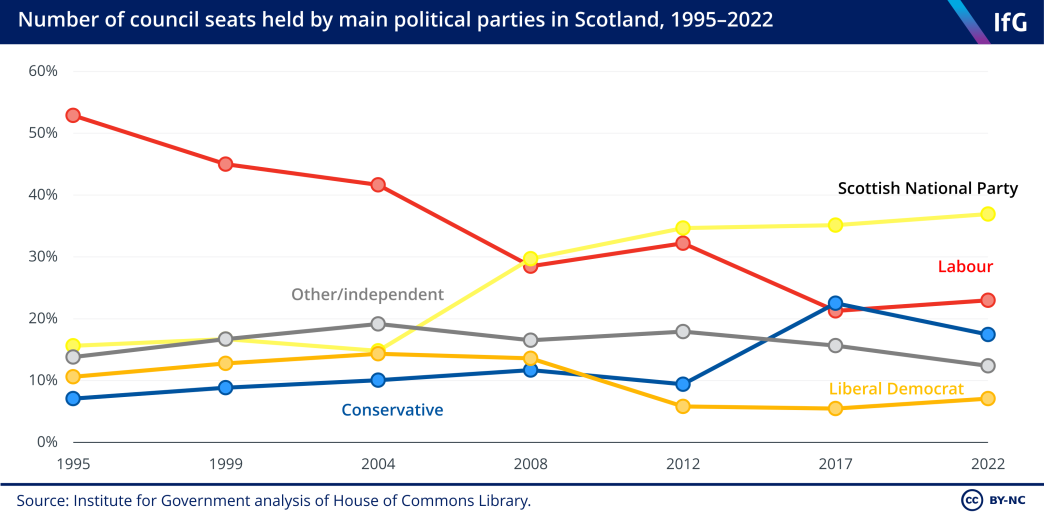
Labour also made gains in Wales, gaining 67 seats and taking control of Blaenau Gwent and Bridgend councils. Plaid Cymru lost a few seats overall, but took control of three councils – Anglesey, Carmarthenshire and Ceredigion. The Conservatives lost 86 councillors and control of Monmouthshire, the one council they had held in Wales. Independents continue to play an important role in Welsh local government.
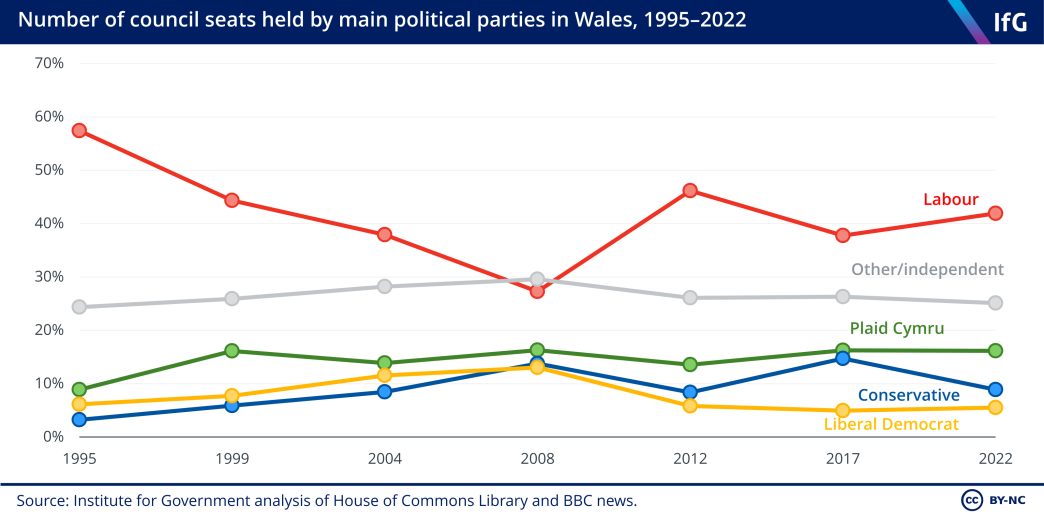
4. Are voters convinced by the mayoral model?
Labour’s Oliver Coppard was elected as the second metro mayor of South Yorkshire, meaning Labour mayors remain in power in seven of the nine metropolitan combined authorities across England. Coppard’s predecessor, Dan Jarvis was elected as the region’s first metro mayor in 2018. But many of the powers available to other metro mayors were only devolved until 2020 because of disagreements at a local level. Coppard will now need to show voters how devolution to a mayoral combined authority can make a difference in areas like transport, skills and planning.
Turnout at the election was just 26.4%, and under 20% in Doncaster where there were no local council elections. Low turnout suggests voters are not yet strongly invested in the model of directly elected model. This is a potential cause for concern for the government as its levelling up plans include a mission to roll out directly elected mayors to all areas of England that want them.
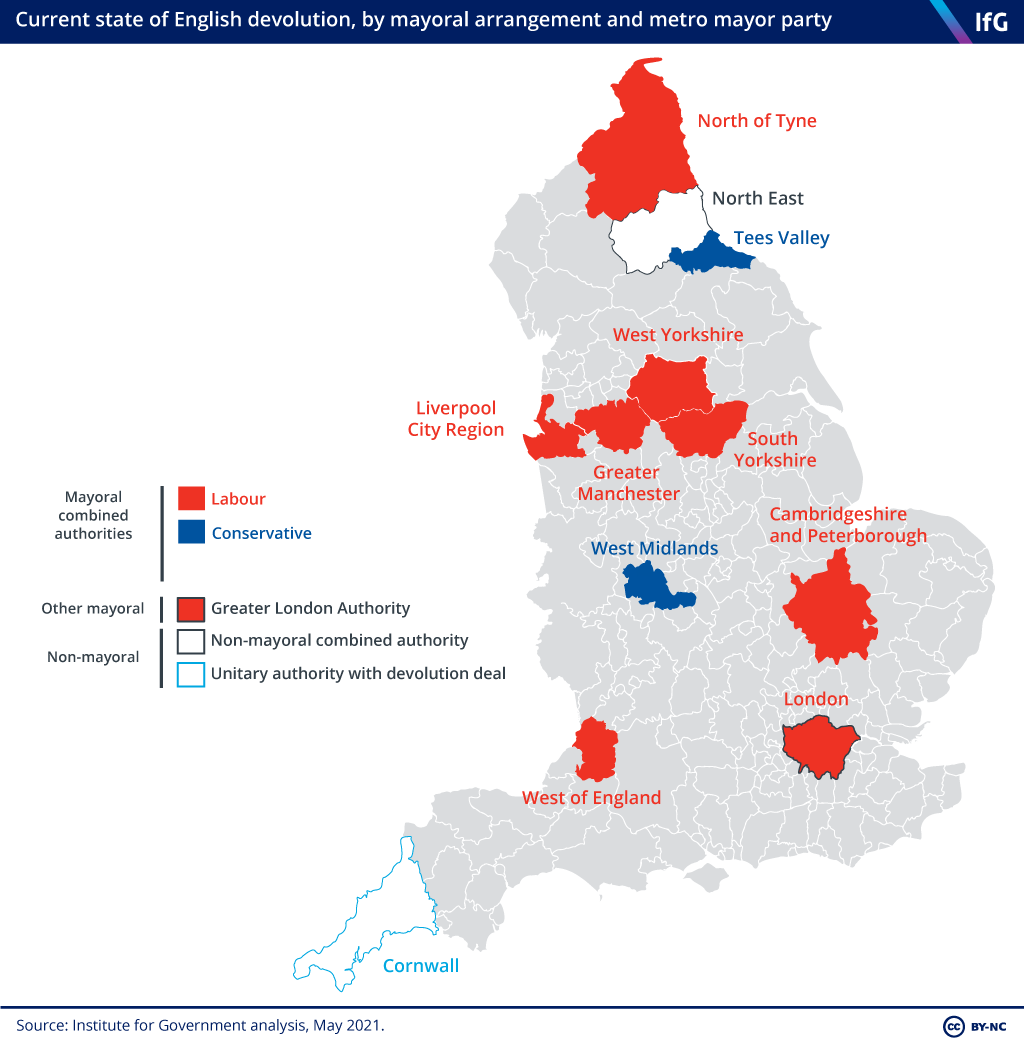
5. Will elections in county areas affect negotiations on future devolution deals?
In its long-awaited Levelling Up white paper, published in February, the government announced it would negotiate 10 new ‘devolution deals’ with English regions, to transfer powers over functions such as transport, adult education and planning.
On 5 May local elections were held in eight of the 13 regions where new or expanded deals have been proposed. Maintaining local support for devolution deals can be a fraught process, particularly when it requires the agreement of several local authorities run by different political parties. In the event, these elections did not lead to a change in party control in many areas negotiating devolution deals. The exception is Hull, where the Liberal Democrats took control from Labour in a rare Labour-Liberal Democrat battleground. Now that the local election campaigning period is over, the Department for Levelling Up, Housing and Communities is likely to step up its negotiations with these areas in an effort to get some devo deals over the line this year.
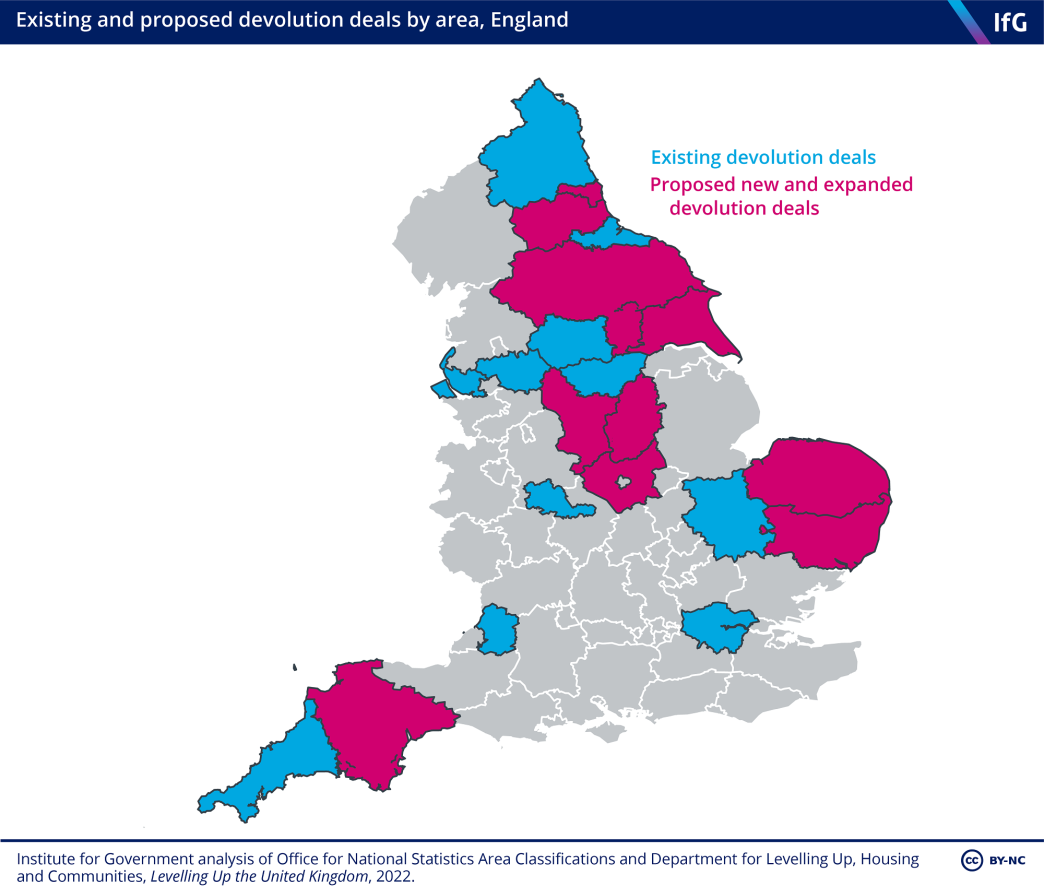
- Topic
- Devolution
- United Kingdom
- Scotland Northern Ireland Wales
- Political party
- Scottish National Party Plaid Cymru
- Position
- Metro mayor
- Devolved administration
- Northern Ireland executive
- Legislature
- Northern Ireland assembly
- Combined authorities
- South Yorkshire Mayoral Combined Authority
- Publisher
- Institute for Government